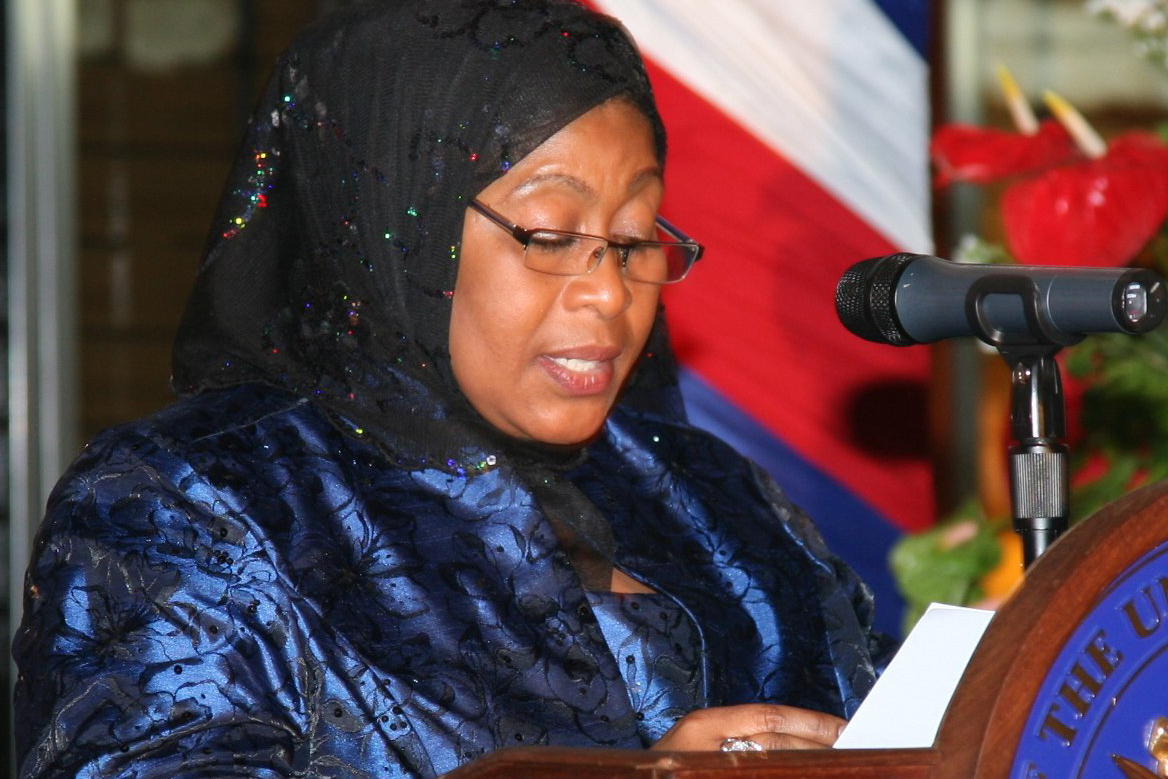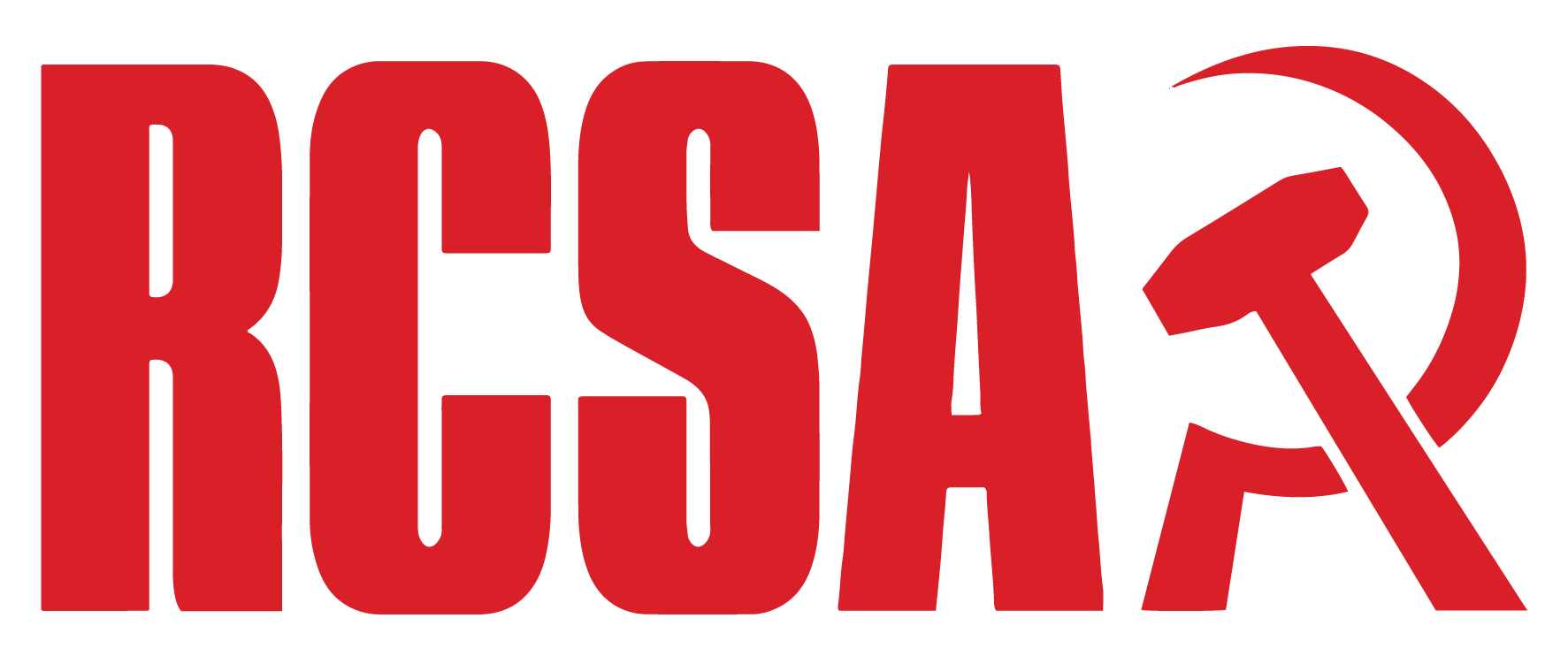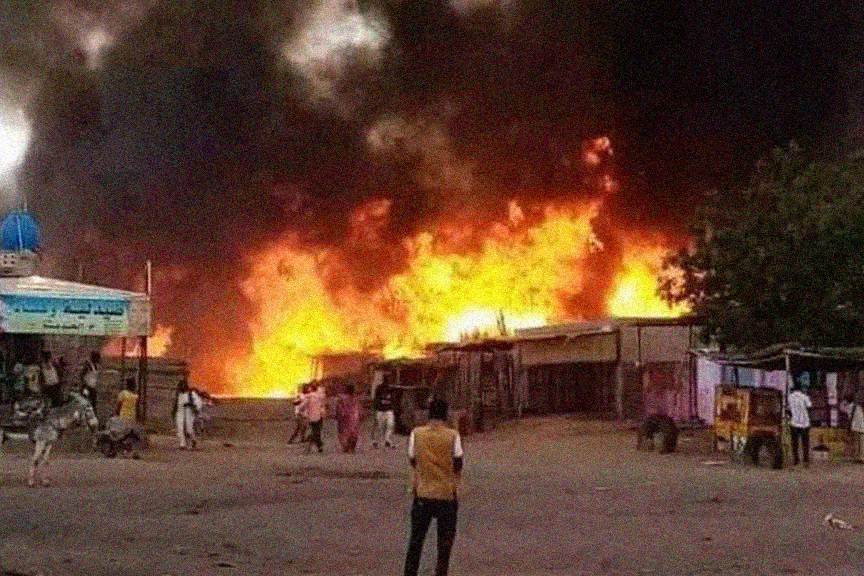[Jonathan Hinckley, 12 November 2025 – Originally published on marxist.com]
On 29 October, thousands of Tanzanians came out across the country to reject intensifying repression and an election without an opposition. With chants of “We do not want CCM”, demonstrators, led by the youth, stormed and burned police stations, polling stations, and the properties of regime cronies. Roads were blocked with burning tyres, and for three days, they clashed with police.
These are by far the biggest and most intense protests in Tanzanian history. They are a resounding rejection of Samia and the six-decade rule of the Chama Cha Mapinduzi (CCM).
The regime responded with extreme violence. Under the cover of an internet blackout and a transport lockdown, reports estimate that up to 3,000 protestors were massacred. In the week since, 300 have been kidnapped from their homes and jailed for ‘treason’. To cover up the full scale of the violence, soldiers are reportedly seizing bodies from morgues to bury in mass graves.
‘Order’ has been restored, for now, at the cost of all the remaining legitimacy of the regime. After claiming 96.6 percent of the vote, Samia Suluhu Hassan was sworn in for a second term as president, not at a public rally in Dar el Salaam as planned, but in an army barracks, with only politicians and generals in attendance.
Now, Samia is doubling back and calling for ‘reconciliation’. But the damage has been done. Tanzania’s longstanding appearance of tranquillity has been totally shattered, and ‘reformer’ Suluhu’s hands are covered in blood. The people have branded her ‘Idi Amin Mama’, after the Ugandan dictator who was toppled by the Tanzanian military.
‘Party of the Revolution’
Tanzania has long been the island of stability in East Africa. The Chama Cha Mapinduzi (Party of the Revolution, CCM) has held power, unbroken, since independence, making it the second-longest ruling party in African history.
Its exceptionally stable rule is rooted in Ujamaa – ‘socialism’ – implemented under CCM founder Julius Nyerere between 1967 and 1976. Like many African countries after independence, the CCM in power was confronted with the total inability of the native capitalist class to raise Tanzania out of the backwards state in which the imperialists had left it. Instead, under the influence of Mao’s China, the CCM stepped in as the state and carried out sweeping nationalisations of industry and the banks, and instituted a state monopoly of foreign trade. In the countryside, peasants – 90 percent of the population – were relocated into ‘model villages’.
This resolved the land question, and forced people from different tribal backgrounds to work together communally. This, along with a push for Swahili as the national language, established a strong sense of national solidarity and averted the interethnic strife that plagued many other African countries, such as neighbouring Kenya.
The country never industrialised under Ujamma and remained largely rural, but the centralised economic plan of the CCM state meant that rural people enjoyed free education, healthcare and other benefits. As a result, literacy rate and life expectancy rose dramatically, even though the country remained poor.
The nationalisation of key levers of the economy also broke Tanzania away from imperialist domination, a feat that many oppressed masses in other countries dominated by imperialism in Africa and beyond aspired to.
It was these gains of the revolution that gave the CCM regime enormous popularity and unusual longevity on the African continent. Tanzania under Nyerere was a model and inspiration for revolutionary struggles across Africa.
These foundations have long since unravelled. Since independence, the population has grown almost sixfold, doubling in the last decade alone. The median age of the country is under 18.
With no opportunities in the countryside, this new generation is flocking to the cities. Dar es Salaam, the capital, is the second fastest growing city in the world, and is estimated to hit 13.5 million by 2035.
But there are no opportunities in the cities. The breakneck urbanisation has not been matched by any growth in industry or jobs, nor any urban planning. Instead, these impoverished youth are crowding into slums and vegetating in unemployment (which is at 26 percent) or joining the informal economy (representing 92 percent of all employment).
An overwhelmingly young, poor, educated, urban population, with no future prospects, no love for the regime, and able to learn from the examples of Gen Z revolutions that have reached Madagascar and neighbouring Kenya. This is a powder keg. And this process is occurring across the whole of sub-Saharan Africa.
Corrupt and repressive
Above the suffering millions, the CCM elite has grown fat.
In the 1990s, Tanzania’s economy was ‘liberalised’. The one-party state retained its hold on the key levers of the economy. But industries were privatised and handed out to party bureaucrats, rearing a class of capitalist millionaires and even billionaires from out of the CCM’s ranks.
Meanwhile, Tanzania was opened for business. Tanzania has become a ‘corridor economy’, a gateway through which imperialist powers can suck valuable minerals out of East Africa. In exchange for generous commissions, the regime made itself an accessory to the looting of the continent, striking lucrative deals for Chinese megaprojects, and selling off ports, energy companies and railways to assorted multinationals.
On paper, Tanzania became a multi-party state. But the CCM’s dominance over the state means that most of the ‘opposition’ has been dependent on it for patronage, allowing it to absorb the opposition and convert their parties into puppets.
Real opposition came to the surface in 2015, when the CCM’s vote share dropped to 58. The leading opposition party, which won 40 percent of the vote, was Chadema (Party for Democracy and Development).
Make no mistake, Chadema – which is still the main opposition party – is a bourgeois party. It aims to resolve the problems of Tanzania by further privatising the economy, by opening it up even more to imperialist vultures. But its calls for democratic reform inevitably struck a chord in the context of the CCM’s increasingly heavy-handed, obviously corrupt rule.
The regime, under President John Magufuli, ‘the Bulldozer’, dealt with this opposition with extreme brutality. Under his watch, repression – which has been a feature of the regime from the outset – became far more brazen. ‘Political activities’ were banned outright, elections annulled, and opposition figures assassinated or disappeared.
On the other hand, Magufuli tried to reclaim some of the CCM’s popularity by seeming to crack down on corruption. A strongman, he was unafraid to discipline both classes – shooting at protestors, and humiliating corrupt bureaucrats and capitalists on live TV when they stepped out of line. But John Magufuli suddenly died in 2020.
Idi Amin Mama
Enter Samia Suluhu Hassan. Samia, the first female president in East Africa, was supposed to inaugurate a new democratic dawn. She promised reforms. Bans on opposition parties were lifted and political prisoners freed.
But the point is that the CCM will not easily relinquish its grip on power. It has been merged with the state apparatus for six decades. For the vast CCM bureaucracy and the capitalist class which is bound to the CCM, this is a position too profitable to give up. With no way of actually addressing the problems confronting Tanzania, it was inevitable that, to maintain its dominance, the CCM would rely on the force that underpins all state power – armed bodies of men.

Therefore, very quickly, repression returned. In the year leading up to last week’s election, hundreds were arrested, disappeared and killed. Chadema’s leader, who had survived an assassination attempt under Magafuli, was jailed for treason and is facing the death penalty. Another leading Chadema activist was kidnapped in broad daylight by masked thugs and later found dead, with acid poured on his face.
But this only provoked a far more dangerous form of opposition. A few weeks before the elections took place, serving Tanzanian Air Force Captain Tesha published a livestream in which he denounced the corrupt “deep state”, called on the military to intervene, and urged citizens to stand up because the army would be “on their side”.
The captain was quickly removed. But the video went viral, with Captain Tesha branded as the Tanzanian Traore, after the popular left-wing coup leader from Burkina Faso. The army is the most trusted institution in Tanzanian society, and with a revolutionary movement sparking a coup just across the water in Madagascar, the dangerous implications of this were self-evident to Samia.
But until now, beneath the heavy heel of the CCM, public opposition has remained online or confined to activist circles. The opposition called demonstrations, but the people didn’t show up. For years, exiled opposition leaders, like Chadema national chairman Freeman Mbowe, have despaired about the passivity of Tanzanians.
“[Tanzanian youth] face so many problems that they’ve got used to them, becoming too numb to do anything…
“Look at the Kenyans [where] youth are angry against their government that it reached a point where they said ‘enough is enough.’ I pray for the same to happen in Tanzania.”
Now it has.
Revolution comes to Tanzania
The accumulated discontent burst into the open against the election of 29 October.
It has long been clear that this would be a coronation. Chadema boycotted the election, and the candidate for the second-largest opposition party, ACT-Wazalendo, was prevented from standing. On the day, although the regime reported a turnout of 87 percent, the polling stations were almost empty.
Instead, thousands of youths flooded the streets in Dar el Salaam, with protests spreading into all the major cities.
Chadema’s slogan of ‘no reforms, no election’ was taken up by the demonstrators. But it’s clear that Chadema is not in control. In fact, Chadema’s international Secretary, Deogratias Munishi, warned on BBC News that, “We don’t want a situation that could escalate to what has happened in Madagascar.” Instead, he urged Ruto – the butcher of the Kenyan Revolution – and the African Union to intervene.
These protests have no leaders. As a Tanzanian journalist explained:
“Although many of the young men in the protest were cursing with slurs, their complaints were clear, many repeating, ‘what kind of an election is this…?’, ‘they thought it would be easy, just to abduct people’ […]
“One clear thing, there was no plan, or a leader on what would happen next, most were learning and deciding about the following step as the situation unfolded.”
This spontaneous, volcanic assault of the masses, at the beginning, overwhelmed and paralysed the regime.
In its sweep, it also revealed key allies. Protests broke out inside Kenya, in the border town of Namanga. Viral social media posts allege that groups of Malawian Gen Z marched on the border, chased away guards and entered Tanzania to offer their support.
It is clear that this is part of the ferment across East Africa, with the youth and oppressed from Kenya to Uganda to Tanzania linking their struggles against the brutal rulers of these countries with their own. Just as these brutal regimes count each other as allies, so the masses correctly see in each other their natural allies against their oppressors. Indeed, slogans like “Siri Ni Numbers”, raised in Tanzania, were taken directly from the struggle against Ruto in Kenya.
Even the army was affected. As the Financial Times reports:
“…some videos appeared to show the army intervening on the side of demonstrators to prevent the police from firing, though the internet shutdown made verification difficult. ‘When the police saw the military coming they pulled back,’ said one rights activist.”
But this leaderlessness also constitutes the main danger to the movement. As we have seen, within three days, the police, army and regime militias had regained control and crushed the movement in blood, massacring thousands.
Samia has already shown that she will stop at nothing to destroy opposition. In order to triumph against the disciplined and centralised forces of the state, the movement needs arms, organisation, and most of all, a national leadership armed with a strategy to overthrow the regime itself.
It also needs a programme. It’s clear what the masses don’t want: rigged elections, Samia the butcher, the CCM. But if the regime falls, what will replace it?
A reformed CCM? Chadema? The army? Even if the regime changes its face, the same Tanzanian millionaires and billionaires – who are all accomplices of the CCM – will own the country. So will the imperialists – with the world economy in crisis, and with an intensifying struggle over the resources of Africa, that means poverty and corruption will remain.
The root of the problem is capitalism. Only by fighting for the real liberation of Tanzania – from capitalism and imperialism – could a revolutionary leadership galvanise the Tanzanian millions into a thoroughgoing struggle to tear down the CCM, dividing the army, and bringing the potential allies of the movement – the youth, workers and poor of East Africa – wholly into the field.
When the Tanzanian masses return to battle – already a new ‘mega maandamano’ (protest) is being planned for 9 December – the key question is, will they be armed with a leadership of their own, ready to go all the way, or will another force enter the vacuum? That same question confronts every single wave of the revolutionary tsunami that is presently sweeping Africa and Asia.


